Geraldine Kirrihi Barlow is Head of International Art at Queensland Art Gallery | Gallery of Modern Art.
Please download a copy of How Might A Thread Of Moments Be Like The Space Of A River? here
HOW MIGHT A THREAD OF MOMENTS BE LIKE THE SPACE OF A RIVER?
A text by Geraldine Kirrihi Barlow
The Acqua Alta projects of Andrew Hazewinkel unfold with the logic of a traverse through a multi-layered terrain, a landscape with it’s own distinctive metaphorical, aesthetic, historical and conceptual features. Each work an installation of ropes and cast fibreglass anchors or holds, often presented together with found objects, photographs, sculptural works, drawings or films. Our attention is always drawn to the flow of our own movements through space and time, this dynamic passage becoming a metaphor for the many other movements running through the works. Together, the Aqua Alta projects elaborate a number of definitional tensions, creating a flow of meaning between apparent polarities: provisional and monumental architectures; symbolic markers of both the celebratory and the elegiac; liquid and solid, the clean and unclean, spaces of nature and culture.
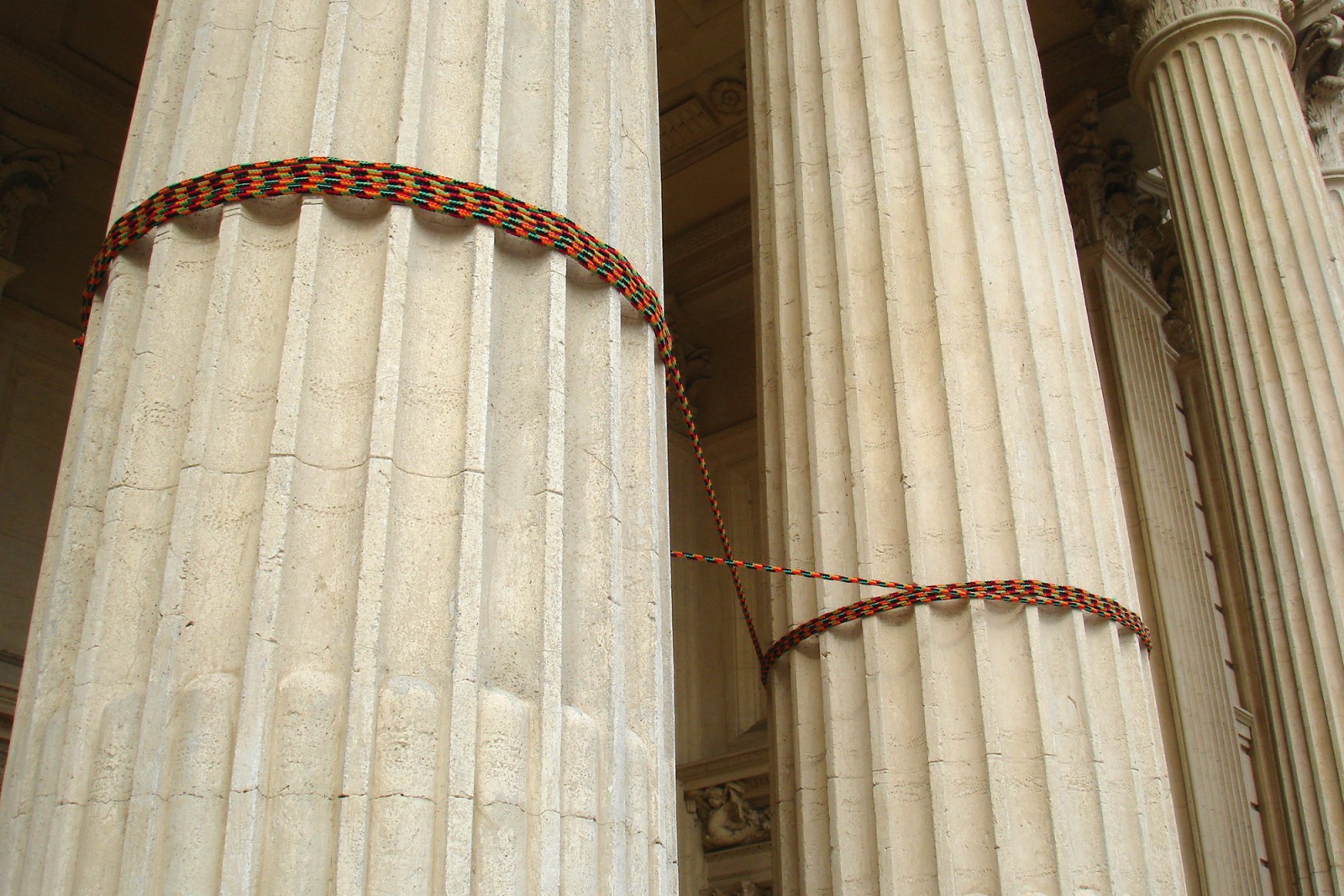
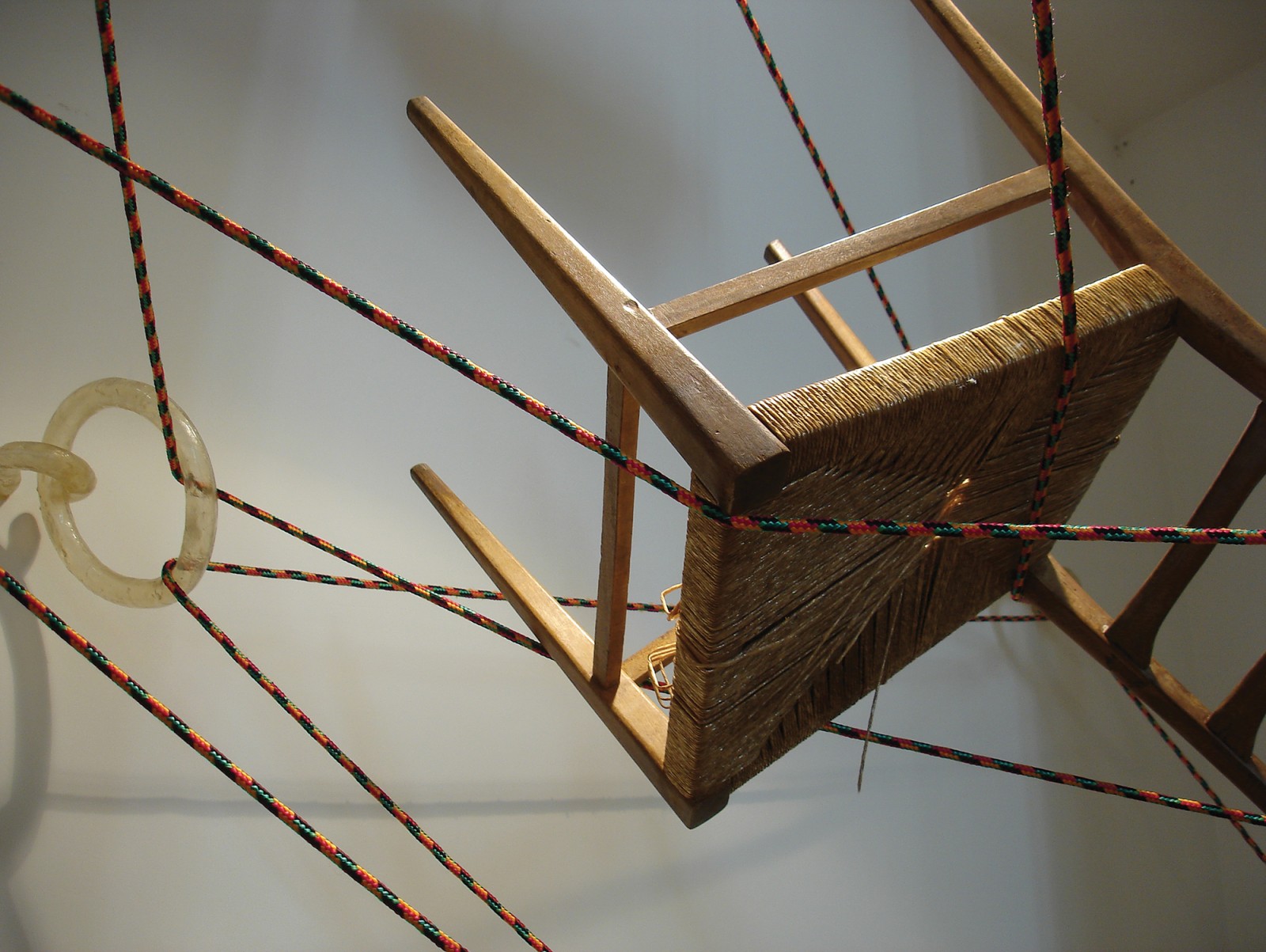
Acqua Alta #1 2006, took place at the British School at Rome. Two of the four pairs of columns ornamenting the neo-classical façade were bound with a figure eight pattern of rope, a pair of circles, a symbol of infinity, and a path into the interior. Travelling through the foyer and on into a stairwell, the work entered the sub-terrain, or lower level of the school. Here the rope criss-crossed the space, threaded through a series of transparent fibreglass wall rings or anchors, glowing in the overhead light. Suspended upside-down from the ropes was a chair. Like flotsam and jetsam tumbling on a flooded river, the upended chair evokes a liquid quality, as if, in a parallel reality, air might be water. There is a strong sense of movement, alongside a counter-tension of claustrophobia and stasis. The world is upside down here, what was once functional is now an ornament in a web, a sculptural form with an absurd pathos.
As if following Ariadne’s thread in reverse, viewers were then asked to journey down the stairs, and along a further corridor within the bowels of the building. A rhythm was established in the space, with the sway and repetition of each arched line of rope. Whilst web-like, this garland trail of brightly woven cord was also celebratory. A similar palette of bright primary colours was threaded through Hazewinkel’s photographs at the end of the corridor Domus-sub/merge 2006. Here we encounter the tents and bright plastic bags housing the belongings of those living under the bridges along the Tiber River. Each of these photographs of contemporary Rome were paired by Hazewinkel with an image from the Ashby, Bulwer and Mackey Collections, within the archives of the British School, black and white prints of the Tiber in flood, swirling around the distinctive bridges and monuments of the city, images of that which has persisted through time, alongside more fragile and transitional habitations.
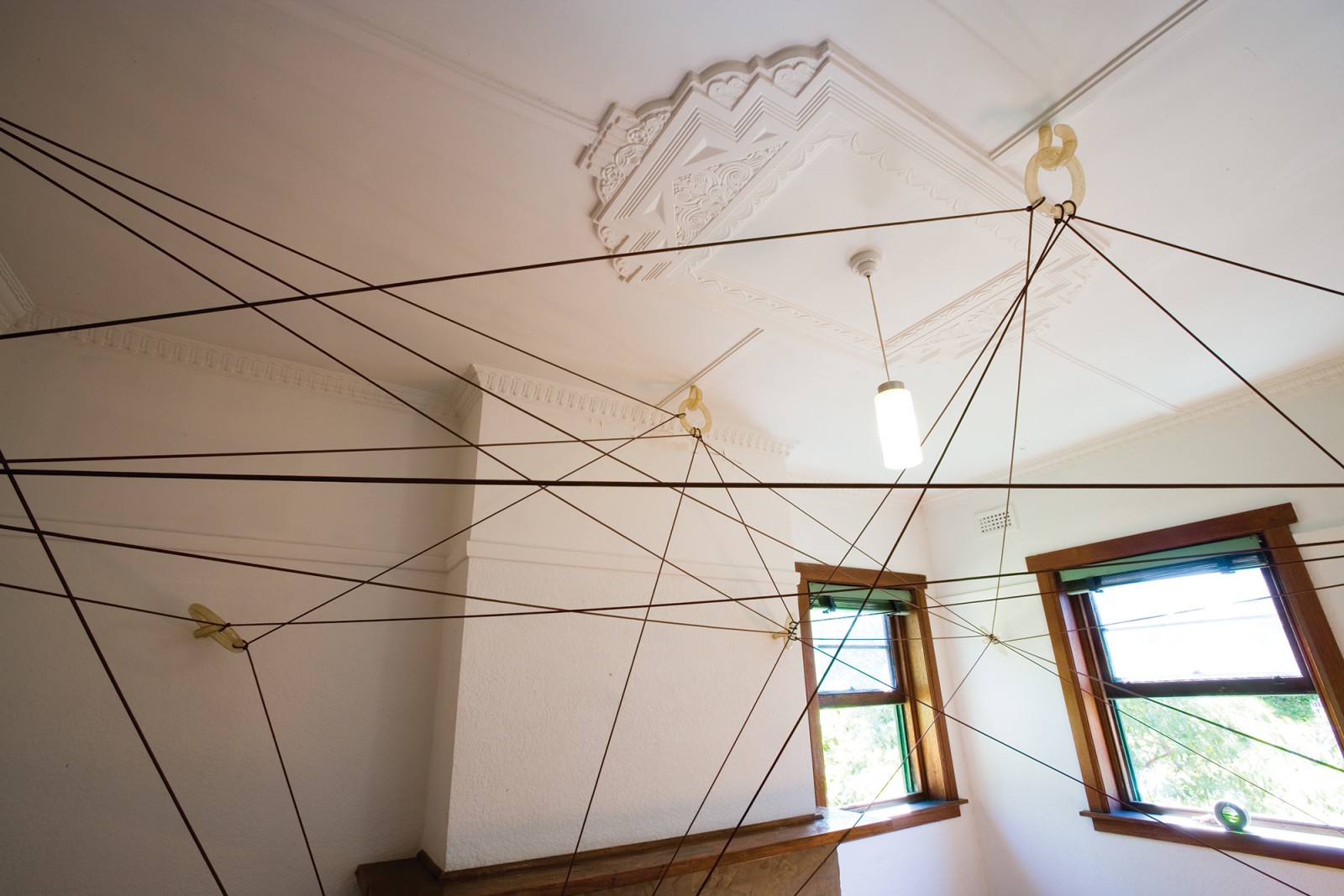
The next evolution of the Acqua Alta project further developed the connection to home. The artist’s own home was the site of Acqua Alta #2 2008. Visitors first encountered a web of chocolate brown rope in the entry stairwell, spanning the brick walls and rising angles of stairs. Again the transparent anchors were employed. Tethering points, fixing the dynamic movement of the rope, a necessary signal of stability. Celebrating the need to fix.
Home. Where we fix and ground ourselves, a place to take root. Here the fixed anchors are in tension with the dynamic form of the rope, multiple trajectories issue from each ring, the mobile, tensile form of the rope requiring the stability of the ring to span the space.
Passing through the front door and entry Hazewinkel’s tracerie of woven cord finds a single space of play in the lounge room, a giant game of cat’s cradle, a dynamic process frozen into a moment’s pause. The web of cord surrounds us, as if capturing the energy and ricochet of past events or conversations as they echo and drift. The room is empty but for these dynamic lines. It is a room with an unspecified history: with white plaster cornices, rich timber skirtings, polished floorboards and a rendered concrete fireplace. Empty but for these lines drawn in space, past moments take on a palpable presence. Emptiness frames fullness.
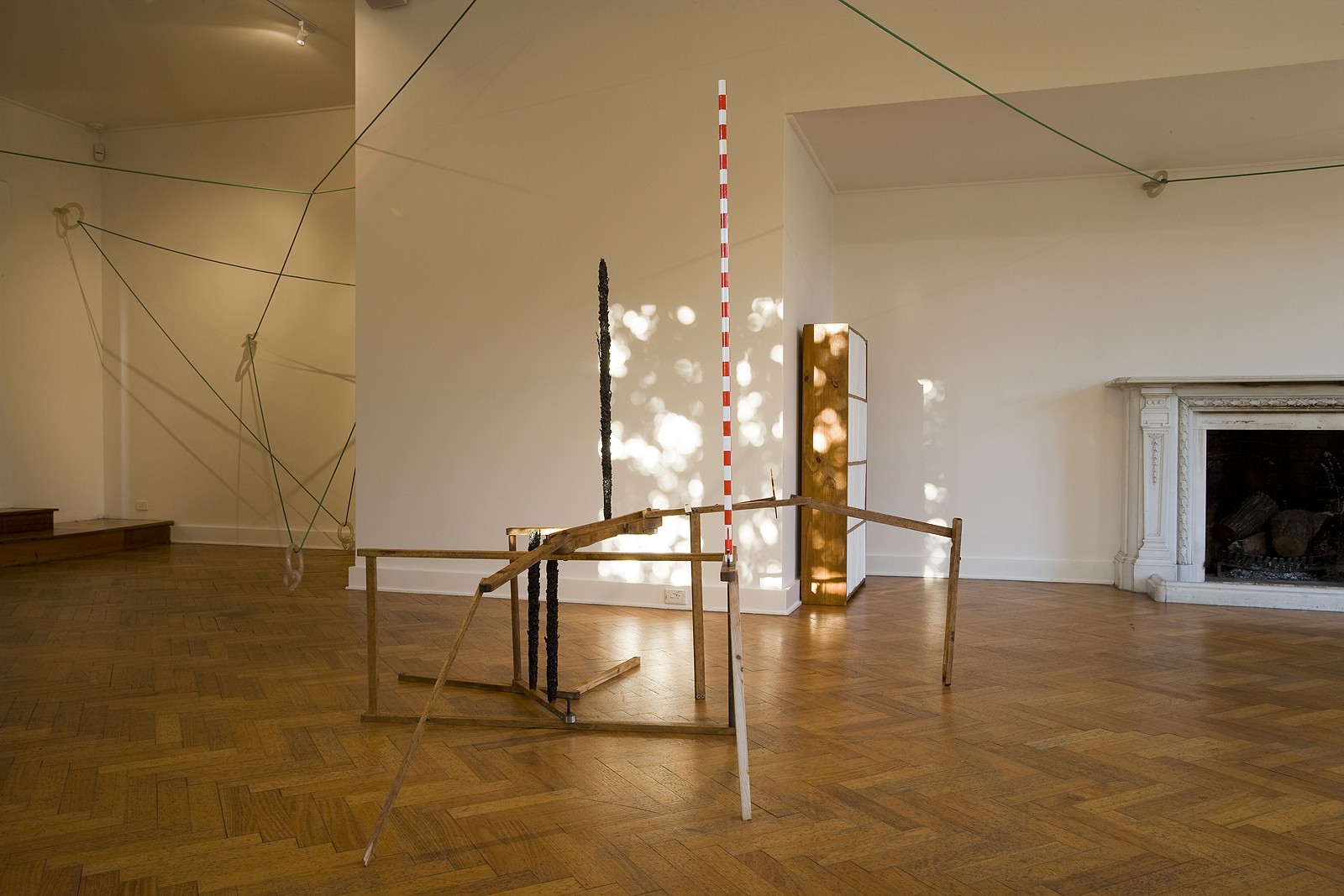
The Italian Institute of Culture, Melbourne was the site of Acqua Alta #3 2009. The ropes and holds, or anchors, which form the connective tissue of the project again led visitors on an exploratory path. These colourful, cords suggest the embedded visual codes of heraldry or horse-racing. In the main salon of the institute was the video work Splinter cycle (recurrent dream) 2008. Here a branch or tree trunk is caught in a flow of water: we encounter the flood and a kind of drowning, or struggle to emerge. Bells chime, as if to mark the solemn threshold of a ritual passage between one state and another, and direction of the film shifts, suggesting time itself might be caught in a nightmare eddy of the river.
Across from this film, again in the main salon, were the series of photographic works begun whilst Hazewinkel was at the British School at Rome, Domus-sub/merge 2006-9. Upstairs were two further works, also filmed in Rome. Raft 2009 in which a wooden pallet dips and bobs on quietly sparkling waters and Turbulence 2007 where empty drink bottles and lost soccer balls gleam in the light, caught, dancing in slow motion as well as churning, trapped in this eddy of the Tiber. This work is again almost festive, with it’s brightly coloured subjects caught on the gleaming, flood of water. There is something deeply unsettling in this beauty, this excess of buoyant trash and lost toys, a sense of warning and foreboding.
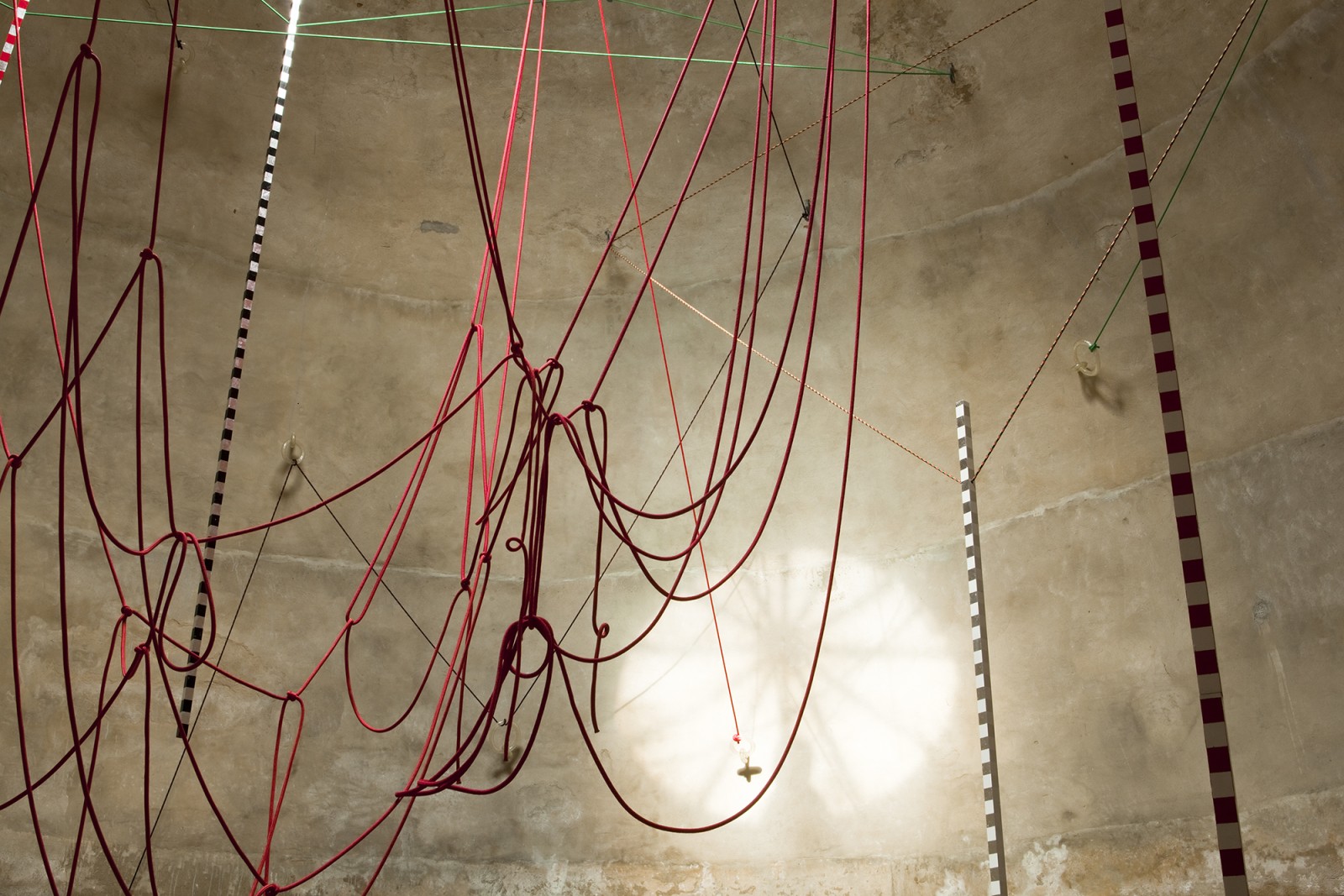
Acqua Alta #4 2010 took place at the Norla Dome, a landmark building within the Mission to Seafarers, on the banks of the Yarra River, historically at the centre of Melbourne’s docks and wharves. Walking into the space visitors encounter a chandelier-like tangle of red rope, swagged and suspended within the soaring arc of the dome. Light falls from a circular window, or aperture, above. On the floor, in the centre of the space, is a highly reflective circle of black sump oil, from which a convex mirror protrudes, yet another double in this play of many perspectives. Ropes traverse the vaulted volume of the dome. A layered sketch of red, anchored with Hazewinkel’s fibreglass holds as well a number of existing iron rings, a series of brightly painted geometric measures cut the space vertically. In the entry, the video work Weightlessness 2010, in which tattered bunting such as that which might adorn a used car sales yard, moves in the breeze, a white shrouded building behind. Time flows erratically, the orange triangles seeming to move to multiple time signatures. Again, we encounter an unsettling conjunction of the elegiac and the celebratory, the natural and the uncanny. Walking into this space is like walking into and through a drawing. The rope lines relay and transfer energy, just as they might on a yacht. Whilst slender, supple and made of many threads they also have enormous strength, they are vital, when actively employed.
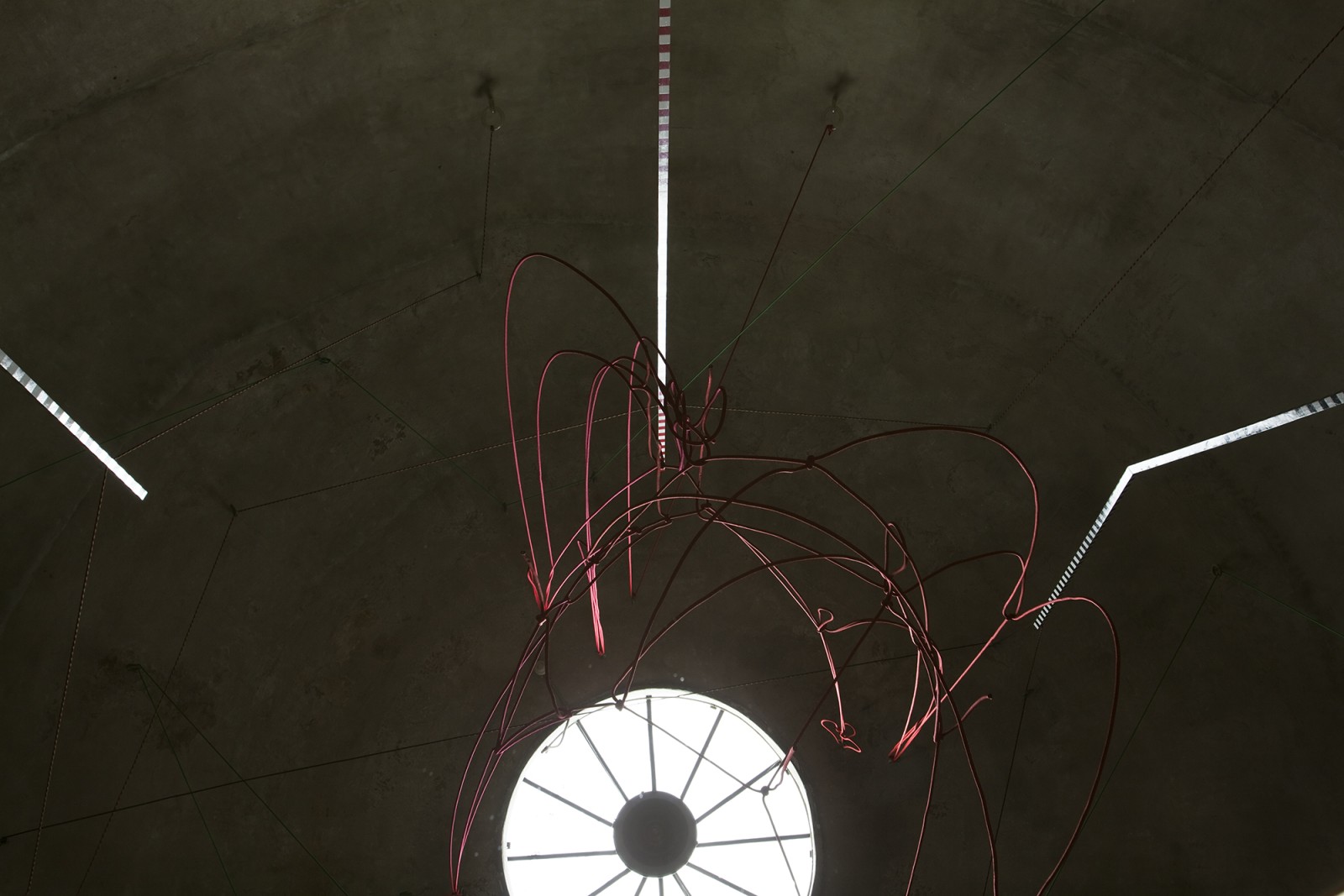
In Acqua Alta #4 Hazewinkel offers us the opportunity to step into an internally focused oculus. Between the circular skylight above and the mirror of oil at our feet, we find ourselves occupying a third sphere, where the concrete is bound to the imagined, creating a propositional space of tangled lines, beautiful webs, flooded monuments and provisional dwellings, a space where the laws of perspective are governed by our own field of perception.